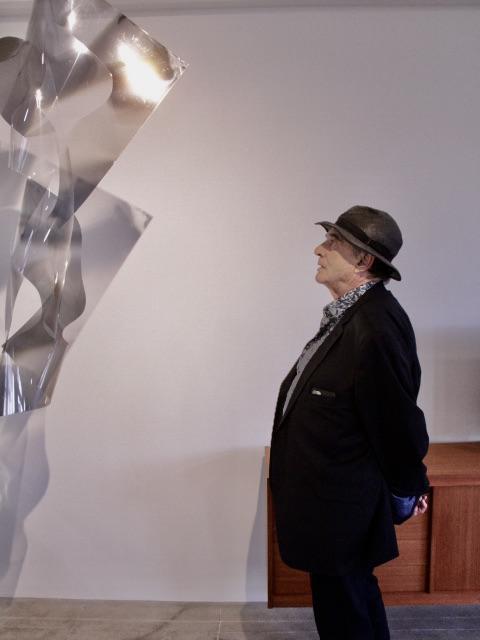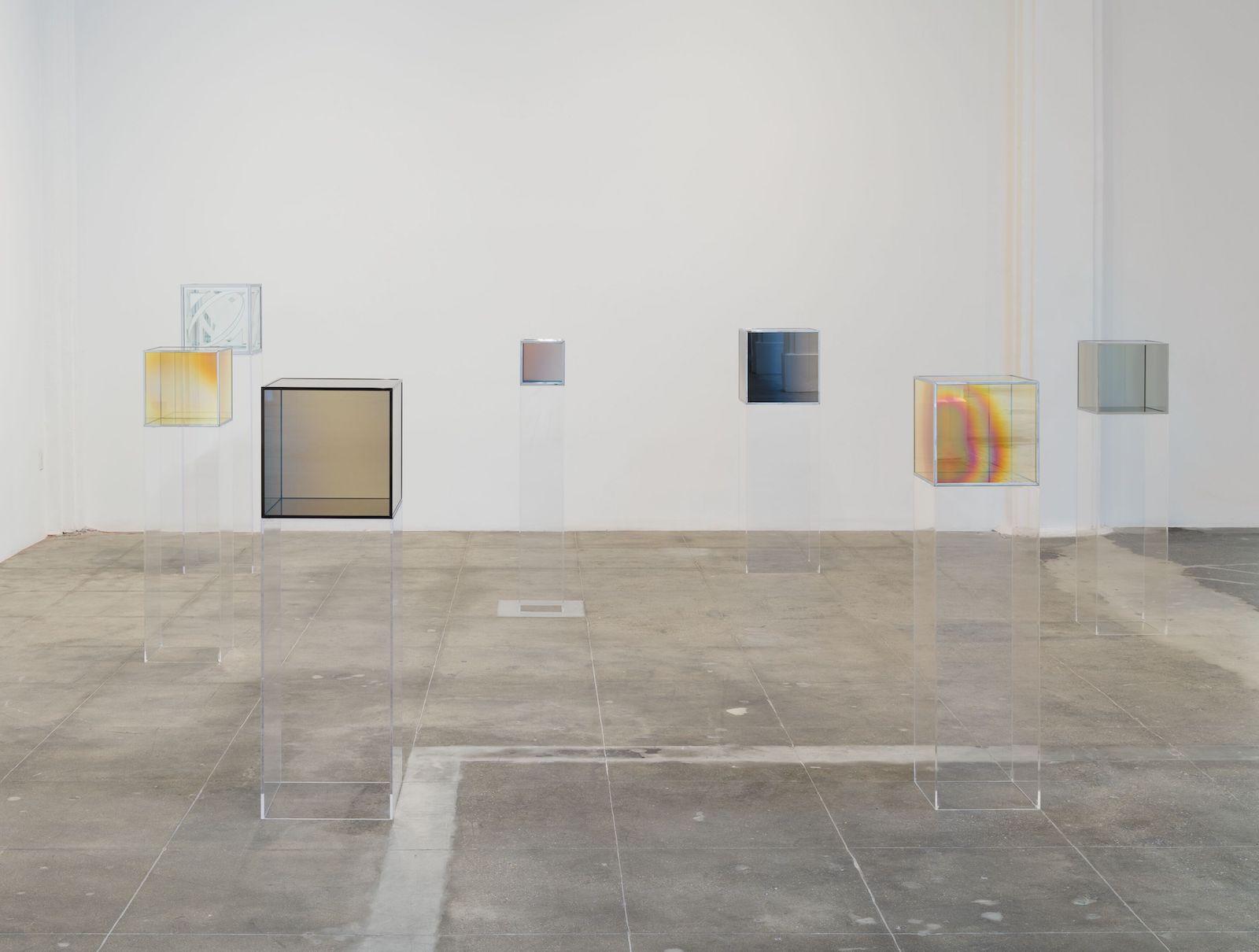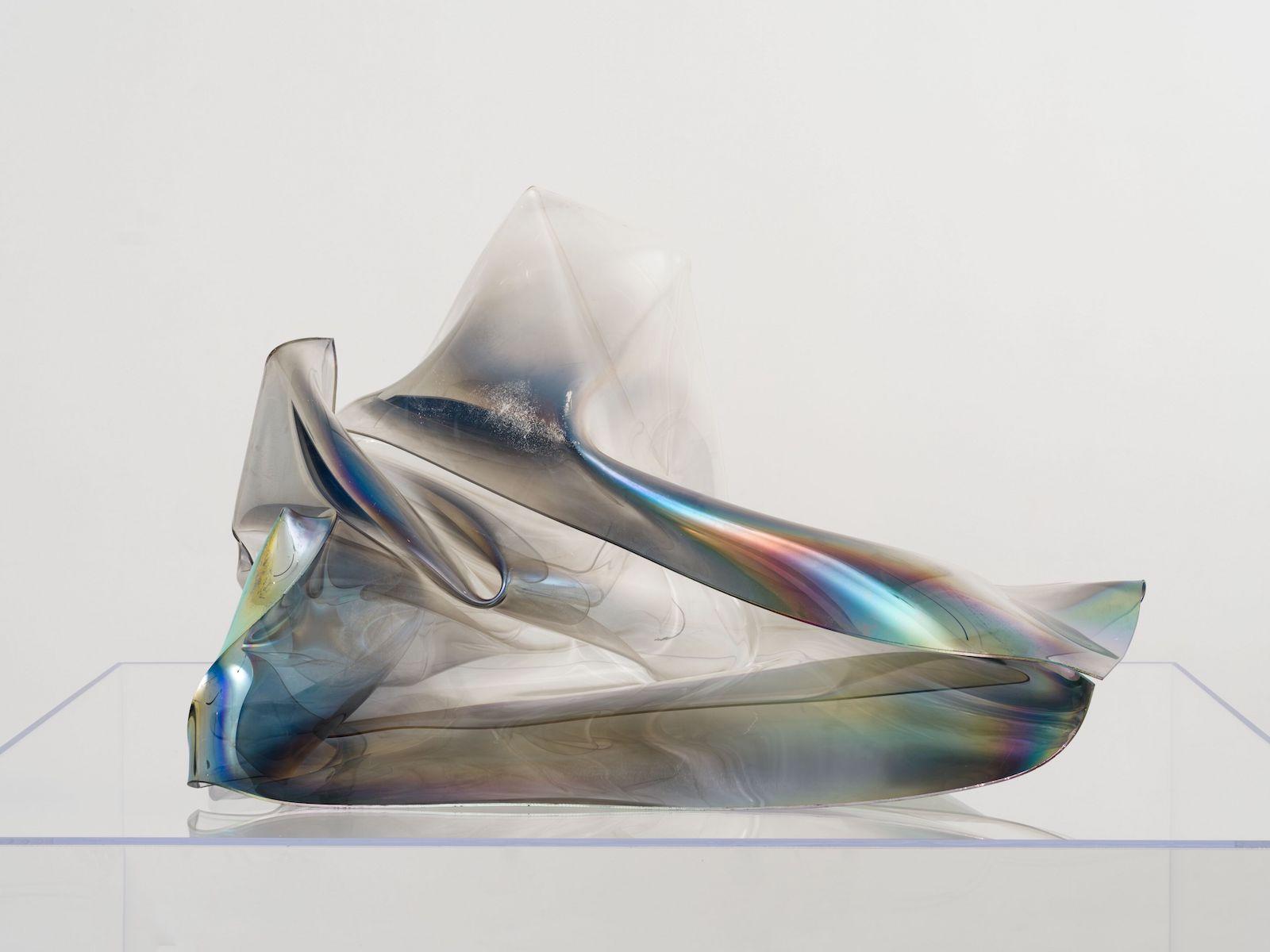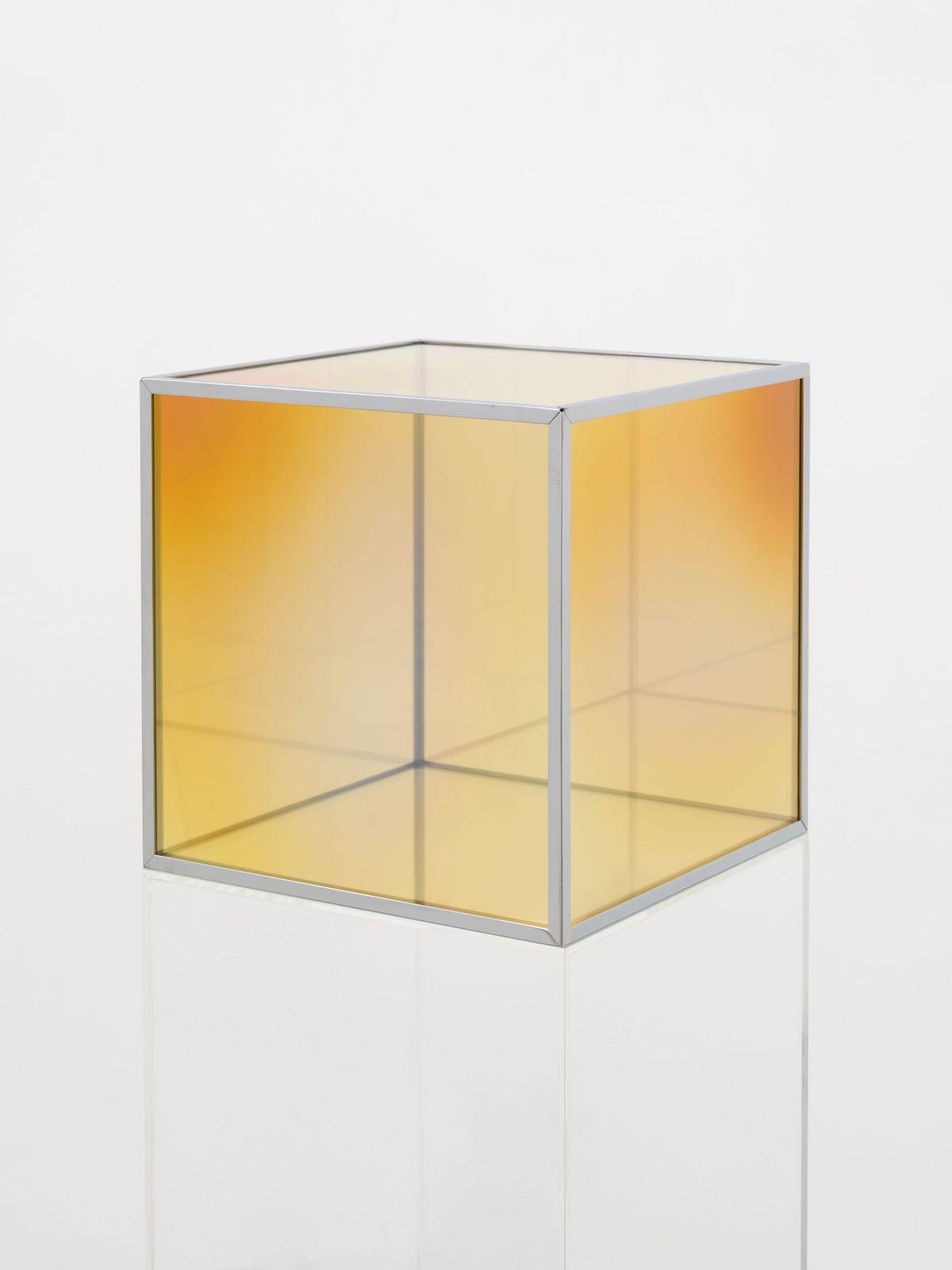“John was probably the preeminent spontaneous improvisational sculptor of our day,” Bell says, recalling his old friend who came to live with him in the late sixties for a year after a bad breakup with his girlfriend. “I learned from John and others to trust myself to be spontaneous, improvisational, and intuitive with my decision-making. Even though his things flowed and were soft, I'm just the other side of the coin. My things were all corners and hard surfaces.”
Best known for his Abstract Expressionist dismembered car sculptures, Chamberlain, who died in 2011, presents a series of plexiglass boxes. Softened through heating, they curl in on themselves and are coated with the same vaporized particles as Bell’s cubes.
“Aluminum is what makes them more reflective, and a material called silicon monoxide which was like a form of quartz. And that’s where the colors come from. There's no pigment there,” Bell explains. “Just like the gas in the puddle at the filling station, you see those rainbowy colors. Where you see blue on the water, the gas is thinner than where you see red on the water. The same rule follows with all of this stuff. John would bring these things in and we would put them in the tank and zap ‘em.”





























![DEl Kathryn Barton [Australian b. 1972] the more than human love , 2025 Acrylic on French linen 78 3/4 x 137 3/4 inches 200 x 350 cm Framed dimensions: 79 7/8 x 139 inches 203 x 353 cm](/sites/default/files/styles/image_5_column/public/ab15211bartonthe-more-human-lovelg.jpg?itok=wW_Qrve3)



